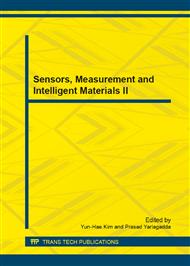[1]
Lyu, Michael R., Handbook of Software Reliability Engineering, McGraw-Hill, Inc., (1996).
Google Scholar
[2]
Akiyama F. An example of software system debugging. In: Proc. Of the Int'l Federation of Information Proc. Societies Congress. New York: Spring Science and Business Media, 1971. 353-359.
Google Scholar
[3]
Halstead MH. Elements of Software Science. New York: Elsevier. North-Holland, (1977).
Google Scholar
[4]
Lipow M. Number of faults per line of code. IEEE Trans. On Software Engineering, 1982. 8(4): 437-439.
DOI: 10.1109/tse.1982.235579
Google Scholar
[5]
Takahashi M, Kamayachi Y. An empirical study of a model for program error prediction. IEEEE Trans. On Software Engineering, 1989, 15(1): 82-86.
DOI: 10.1109/32.21729
Google Scholar
[6]
Malayia Y, Denton J. Module size distribution and defect density. In: Proc. Of the 11th Int'd Symp on Software Reliability Engineering . New York: IEEE Computer Society Press, 2000. 62-71.
DOI: 10.1109/issre.2000.885861
Google Scholar
[7]
Chulani S. Bayesian analysis software cost and quality models [Ph.D. Thesis]. Los Angeles: Univcrsity of Southern California, (1999).
Google Scholar
[8]
Chulani S. Results of Delphi for the defect introduction model, sub-model of the cost/quality model extension to COCOMO II. Technical Report, USC-CSE-97-504, (1997).
Google Scholar
[9]
Chulani S, Boehm B. Modeling software defect introduction and removal: COQUALMO (COnstructive QUALity MOdel). Technical Report. USC-CSE-99-510, (1999).
Google Scholar
[10]
Chillarege R, Bhandari I, Jarik K, Michael J, Diane S, Bonnie K, Man-Yuen W. Orthogonal defect classification-a concept for in-process measurements. IEEE Trans. on Software Engineering, 1992, 18(11): 943-956.
DOI: 10.1109/32.177364
Google Scholar
[11]
Mills H. On the statistical validation of computer programs. Technical Report, FSC-72-6015, IBM Federal Systems Division, (1972).
Google Scholar
[12]
Chen HW, Wang J, Dong W. High confidence software engineering technologies. Acta Electronica Sinica, 2003, 31(12A): 1933-1938(in Chinese with English abstract).
Google Scholar
[13]
GUO SH, Lan YG, Jin MZ. Some issues about trusted components research. Computer Science, 2007, 34(5): 243-246 (in Chinese with English abstract).
Google Scholar
[14]
Boehm B. Value-Based Software engineering-overview and agenda. Technical Report, USC-CSE 2005-504, (2005).
Google Scholar


